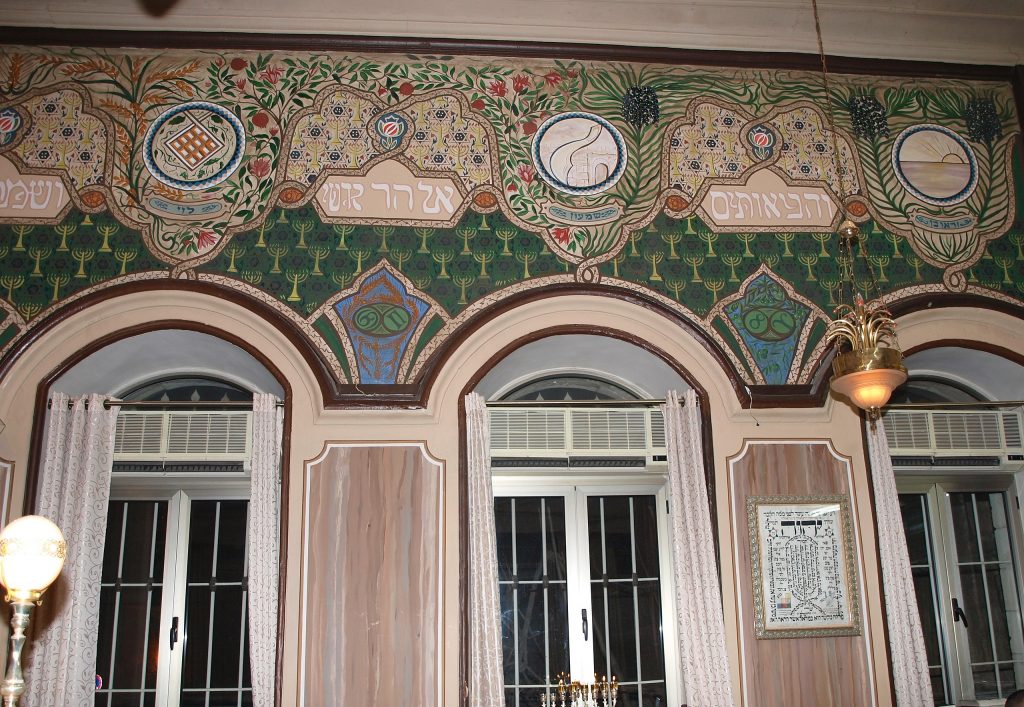Art World
Jerusalem’s Ades Synagogue Celebrates Restoration of Murals


Chana Rusanov

Just a stone’s throw from Shuk Mahane Yehuda, Jerusalem’s famed open air market, and down an alley, you’ll find the Ades synagogue, whose modest stone structure belies the nearly restored murals within.
Hailed by contemporary art scholars as the first monumental work of Israeli art, the murals were commissioned by Syrian Jews over a century ago, and extensive restoration efforts, which began two years ago, are ongoing.
Since the ancient synagogues of Aleppo, the largest city in Syria and former home to a 3,000 year old Jewish community, are likely among the many cultural sites that have been destroyed by ISIS, the restoration of the Ades synagogue, once acclaimed as the “Great Synagogue” of Jerusalem, is particularly poignant.
Hewing close to tradition, the synagogue’s prayer benches and Torah ark display the intricate carpentry and mother-of-pearl detailing reminiscent of the congregation’s Syrian origins, but when it came to painting the walls and ceiling, community leaders boldly chose a secular, eastern European artist from the avant-garde.
But by the early 2000s, the deep blues and greens of the Ades’ murals had chipped and faded, and one wall was almost completely blackened with age. While the actual Sistine Chapel is harnessing the latest technology to preserve its frescoes, the congregation of the “Sistine chapel of the Jews” strongly opposed expert intervention, instead hiring a subpar artist who damaged the murals by nailing and gluing canvas onto the walls and then repainting. A lengthy legal battle culminated in the Israeli government taking control of restoration efforts.
The original artist, Yaakov Stark, was an “impoverished wretch” who “didn’t leave a millimeter unpainted,” according to Yosef Shayo, the synagogue’s current rabbi.
But Stark’s art was groundbreaking for combining millennia old Jewish symbols, like the 12 tribes of Israel which line the walls of the Ades, with stars of David and menorahs, the newly minted icons of Zionism, a national revival movement which encouraged the return of Jews to the historic land of Israel. Even the Hebrew font Stark created for the murals is a fusion of disparate influences, culling from both Arabic calligraphy and Art Nouveau.